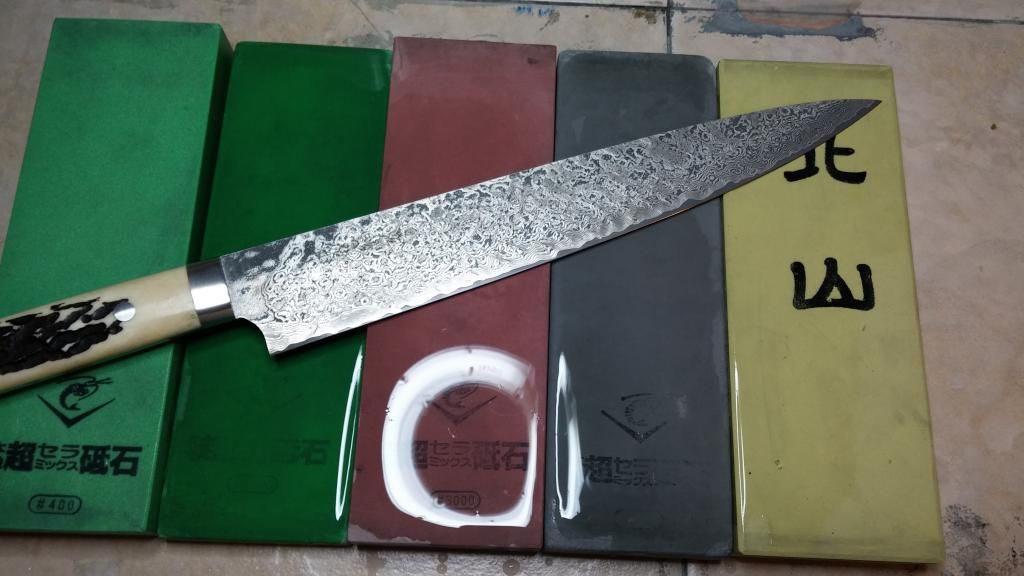 |
| From left to right, Naniwa Chosera 400/1k/3k/5k and Kityama 8k. |
Hi there, I thought I would share my experiences in choosing water stones and some of the mistakes I made.
I hope you appreciate the fact that I made so many mistakes and I am happy to pass them along :)
If you ever meet a sharpener who never asks a questions and gives you the impression that they have nothing left to learn, be wary. There is always more to learn and I really enjoy passing along tips and tricks and you can ignore them of course.
When I first starting getting really serious about sharpening, which I guess is the day I became obsessed with it, five or six years ago I immediately created a water stone bucket list and on the top of my wish list was the the Naniwa Chosera 10k, to me, the stone represented the pinnacle of Japanese Water Stones. Whether it is or not, that is how I felt about it, I started building my collection from the top down, i.e. Ultra High Grit down to the coarse stones.
DO NOT DO THIS.
I had already been sharpening knives for over 20 years prior to this but as I said, when I knew that sharpening knives was going to consume my life, water stones of course became the most important things in my life.
As my business grew and I had more knives to sharpen than I had anticipated, I quickly began to realize that the 15K Shapton Pro that I got was seeing very little use. It was the 220 EP, 400 Chosera, 500 Shapton Glass that became the important stones, the ones that made my knives sharp.
I guess my advice then is to ensure that you have a very nice coarse water stone in your collection and you do not need to go higher than 5k, in my opinion the Shapton Pro 5k or Naniwa Chosera 5k are just fantastic and will satisfy your thirst for those high grit (particle size I should say) water stones.
I am not saying you will never need anything higher, what I am saying is if you are building your collection, do not neglect the coarse stone.
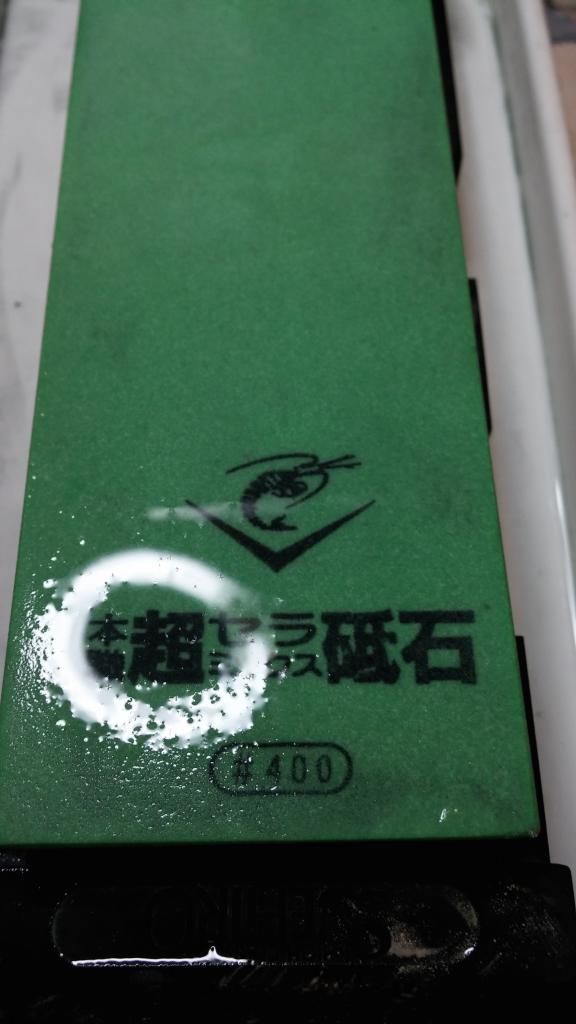 |
| Naniwa Chosera 400 |
400, 1,000 and 5, 000 stones will get you into sharp heaven so start from there and when you can afford it, of course, go for those high grit wonders and enjoy them, they will last an eternity and every now and then when that special knife comes to for for sharpening, you can unleash that Kityama 8k or whatever it is you have.
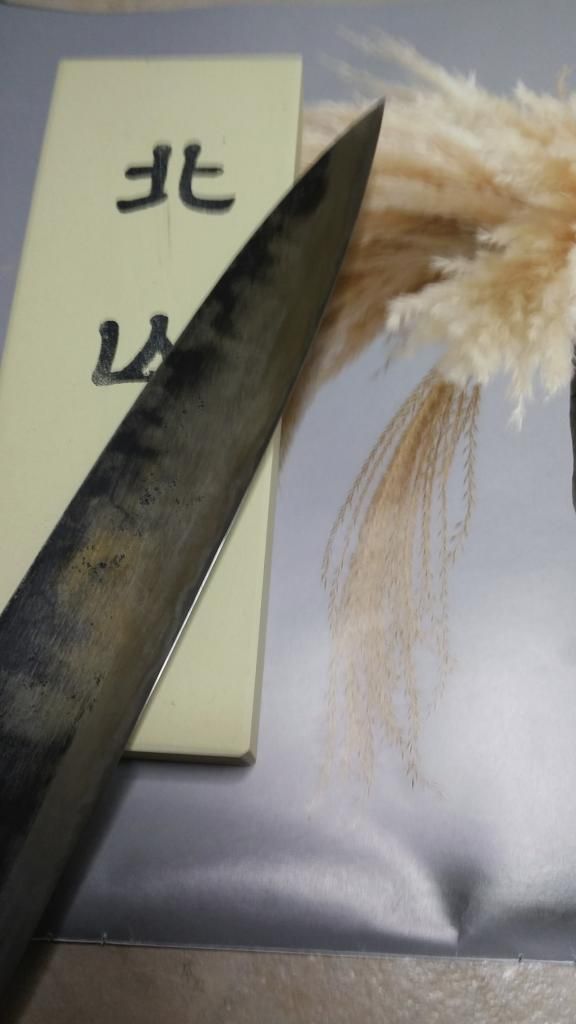 |
| Kityama 8,000 |
(I have tried very recently by the way starting with a 1k stone and it works just fine, it just takes longer and I think I am probably spoiled by the speed of coarse stones in their ability to raise a burr and repair damaged edges.) The fact that Murray Carter does this all the time just adds to my respect for the man.
As for the Naniwa Chosera 10,000 grit dream stone, it took me five years to finally get it and oddly enough the first knife I used it on was one made by Murray Carter and I can tell you, that was one sharp knife and very beautiful.
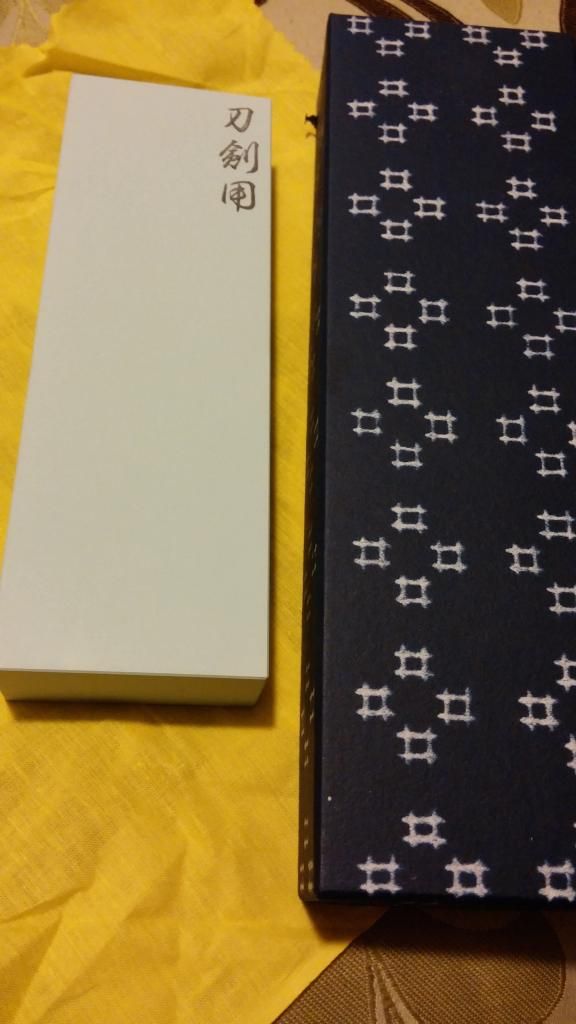 |
| Naniwa Chosera 10,000 |
To summarise, don't neglect the coarse stone and more importantly, learn to take advantage of it and as I mention in previous posts, experiment with pressure adjustments and see for yourself that you can make a knife sharp enough to bring a smile to your face. When you get to that point, you will also see how quickly the work moves along on the subsequent stones, whatever they may be.
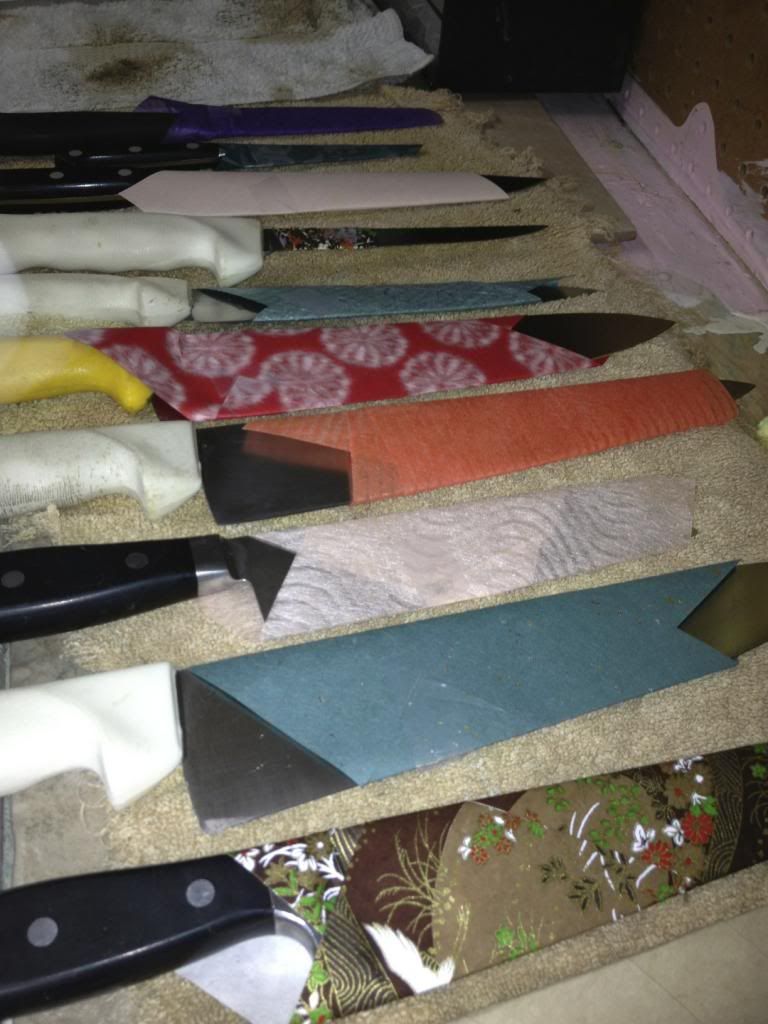
"I hope you appreciate the fact that I made so many mistakes and I am happy to pass them along :)
ReplyDeleteIf you ever meet a sharpener who never asks a questions and gives you the impression that they have nothing left to learn, be wary. There is always more to learn and I really enjoy passing along tips and tricks and you can ignore them of course."
This does apply to the whole life, not only sharpening. A very interesting point of view. Some people just mis-consider jobs and tasks that seem routinary. I've heard this from the most unexpected guys (a train motorman, for example, that was going to retire after a whole life of driving a train in the same urban line, three or four times a day, telling us that each trip was different, and gave him the opportunity to learn from and live a different experience).